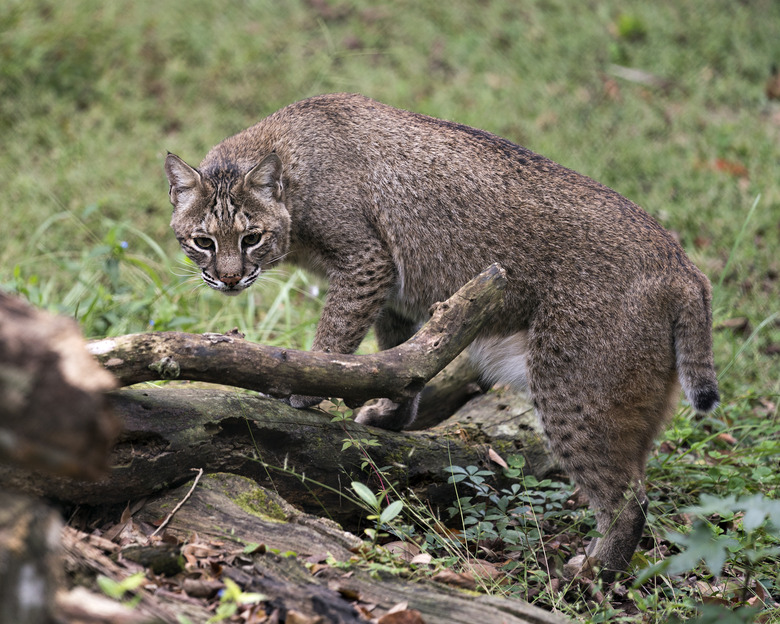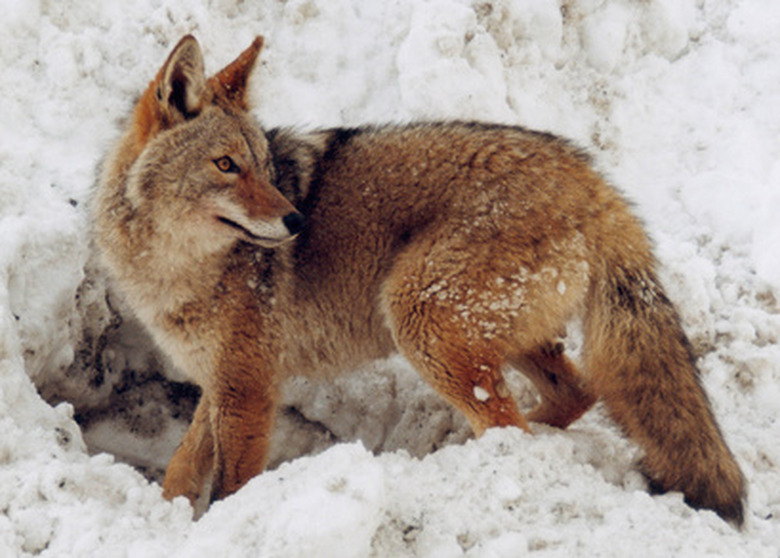The Difference Between Bobcat & Coyote Tracks
The bobcat (Lynxus rufus) and the coyote (Canis latrans) are two predators that share a similar range. The coyote exists throughout all of the United States, southern Canada and into Alaska, while the bobcat inhabits much of the same territory with the notable exception of the upper Midwest. The tracks of these two mammals have some differences as well as similarities.
TL;DR (Too Long; Didn't Read)
Coyote tracks are slightly larger than those of the bobcat, and often show imprints from the coyote's non-retractable claws. The shape of the heel pads is another giveaway; coyotes have one front lobe and two rear lobe in their heel pads, while bobcats have two front lobes and three rear lobes in each heel pad.
Know the Similarities
Know the Similarities
The tracks of the coyote and bobcat are similar in some regards. Both tracks will feature four toes, as both canines and felines have four toes on each front foot and each hind foot. Both tracks will display a heel pad. Also, both tracks are likely to appear in many of the same settings, such as along dusty dirt roads in wooded areas and in the soft silt and mud of the banks of rivers, streams and ponds.
Measuring Track Size
Measuring Track Size
If you think you've found tracks from a coyote or bobcat, size comparison is a useful aid in distinguishing between the two species. In general, a coyote's track will be larger than that of a bobcat. This is because the average coyote is in the range of from 20 to 40 lbs. in weight, while the typical bobcat weighs from 14 to 29 lbs. The coyote's track is about 2 1/2 inches long; the track of a bobcat is around 1 1/2 inches in length. The width of the coyote's track is approximately 1 1/2 inches, slightly wider than the bobcat's, which usually measures in the range of 1 3/8 inches.
Check for Claw Marks
Check for Claw Marks
If you can't determine whether tracks are from a bobcat or coyote with size comparison alone, check for claw marks. While the tracks of a coyote and of a bobcat will feature four toes, the key difference is that the bobcat's track will not show any claw marks. Like the vast majority of cats, the bobcat walks and runs with its claws retracted, leaving no sign of them in snow, dirt or mud. The coyote cannot retract its claws and in many instances, a slight imprint left by the claw is visible on some, if not all, of the tracks left by the toes.
Coyote vs Bobcat Heel Pads
Coyote vs Bobcat Heel Pads
The heel pad's shape is another way to discern whether you're looking at coyote vs bobcat tracks. The coyote, like all canines, has a heel pad with just one lobe in the front and two lobes in the rear. This imprint in the snow might remind you of the outline of a Volkswagen Beetle. The bobcat has two lobes on the heel pad's front portion and three lobes on the rear; this outline is much like that of a puffy letter M.
Foot Size and Placement
Foot Size and Placement
The bobcat's hind foot often makes a track very close to or even in the front foot's track, as the animal walks stealthily through the landscape, trying to stay quiet and concealed from potential prey. The hind print of the coyote is normally smaller than the imprints of the front feet. Finally, the coyote's inner two toes on each track will be just a bit smaller than the outer two toes.
Cite This Article
MLA
Lindell, John. "The Difference Between Bobcat & Coyote Tracks" sciencing.com, https://www.sciencing.com/difference-between-bobcat-coyote-tracks-6526801/. 22 November 2019.
APA
Lindell, John. (2019, November 22). The Difference Between Bobcat & Coyote Tracks. sciencing.com. Retrieved from https://www.sciencing.com/difference-between-bobcat-coyote-tracks-6526801/
Chicago
Lindell, John. The Difference Between Bobcat & Coyote Tracks last modified March 24, 2022. https://www.sciencing.com/difference-between-bobcat-coyote-tracks-6526801/

